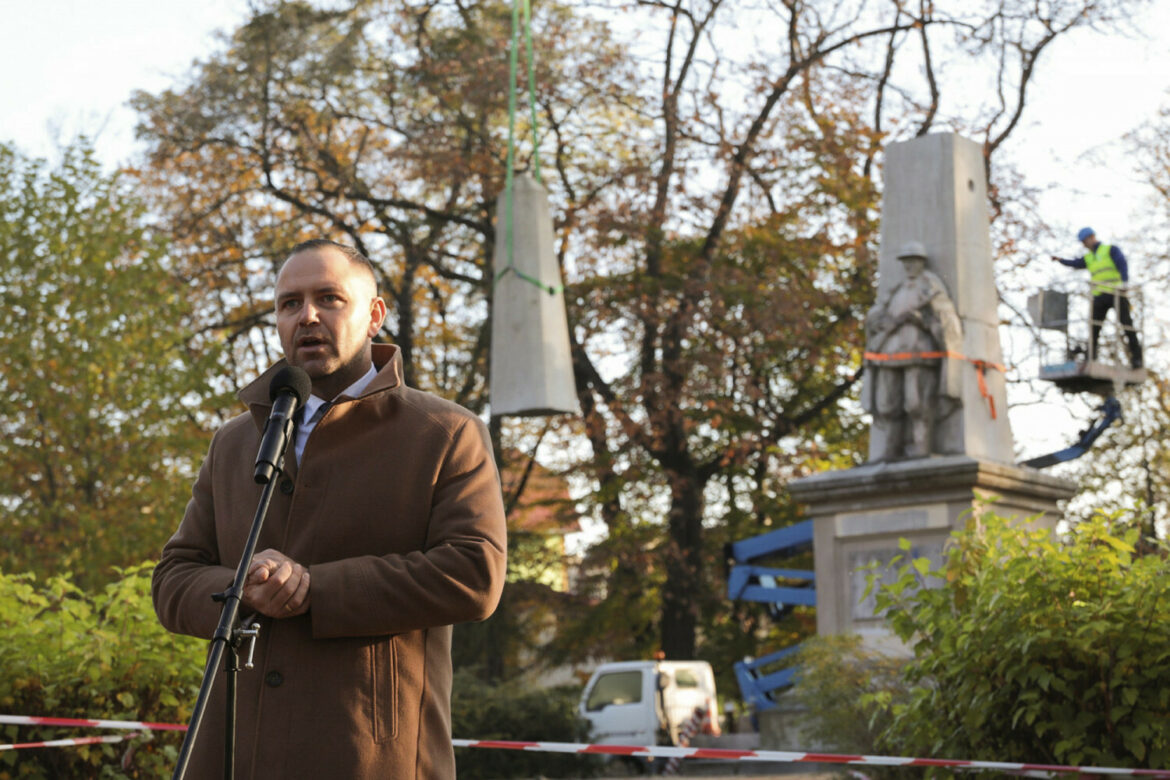Simultaneously in four Polish towns: Głubczyce and Byczyna (Opole Voivodeship), Bobolice (West Pomeranian Voivodeship) and Staszów (Świętokrzyskie Voivodeship), the dismantling of four monuments dedicated to the Red Army took place on Thursday 27 October.
During a press conference in Głubczyce, the President of the Institute of National Remembrance (IPN), Dr Karol Nawrocki, noted that the dismantling action is the implementation of the Act of 1 April 2016 on the prohibition of the propagation of communism or any other totalitarian system by names and symbols placed in public space.
The President of the IPN stressed that monuments dedicated to the Red Army are a symbol not of liberation, but of the enslavement of our country.
“They are a symbol of the system that hand in hand with Adolf Hitler started the Second World War, and thus the most tragic conflict in the history of the world. A symbol of a system which, after 1945, vassalised, colonised half of Europe, including our country, Poland, and in which it continued to murder Polish heroes in secret police torture chambers, in the forests and on the streets. A symbol of a system that murdered Polish workers and anti-communist opposition activists in various regions of Poland in the 1970s and 1980s. And finally, a symbol of the system that still bears its spirit in today’s Russian Federation, which is responsible in the layer of values, in the mental layer for the deaths of Ukrainians in the 21st century,” said Karol Nawrocki.
The President of the Institute of National Remembrance (IPN) added that the Głubczyce monument is also a symbol of a lie, an ahistorical monument, because neither in Poland in 1945, nor in the Opole region, nor in the pre-war areas of the Second Polish Republic, did the Soviets bring freedom in 1945. “They brought another enslavement, they conquered Poland and treated it as their conquest.
Liberation could not be brought by those who did not have freedom themselves”, said President Nawrocki.
Adrian Andrzejewski





